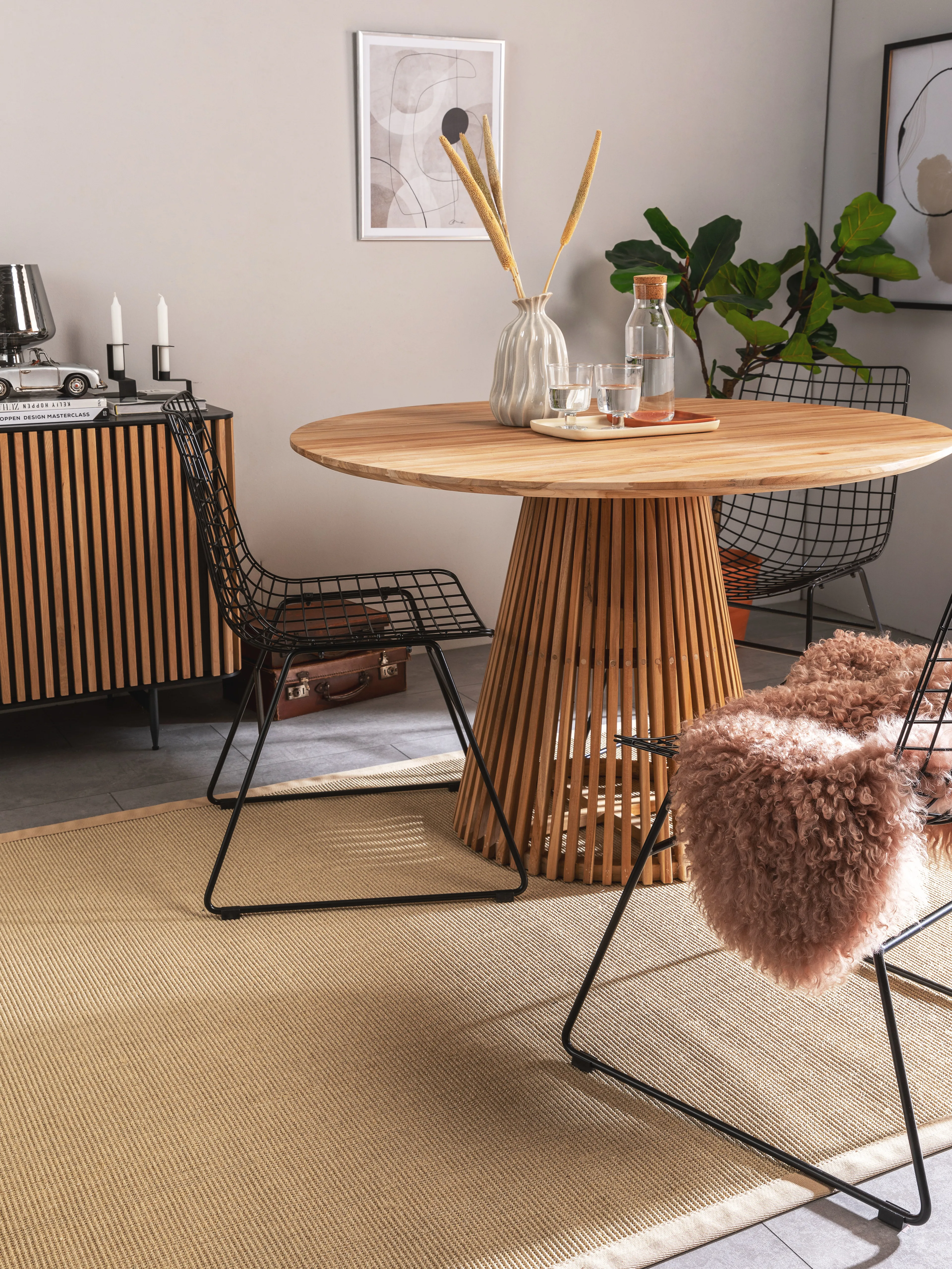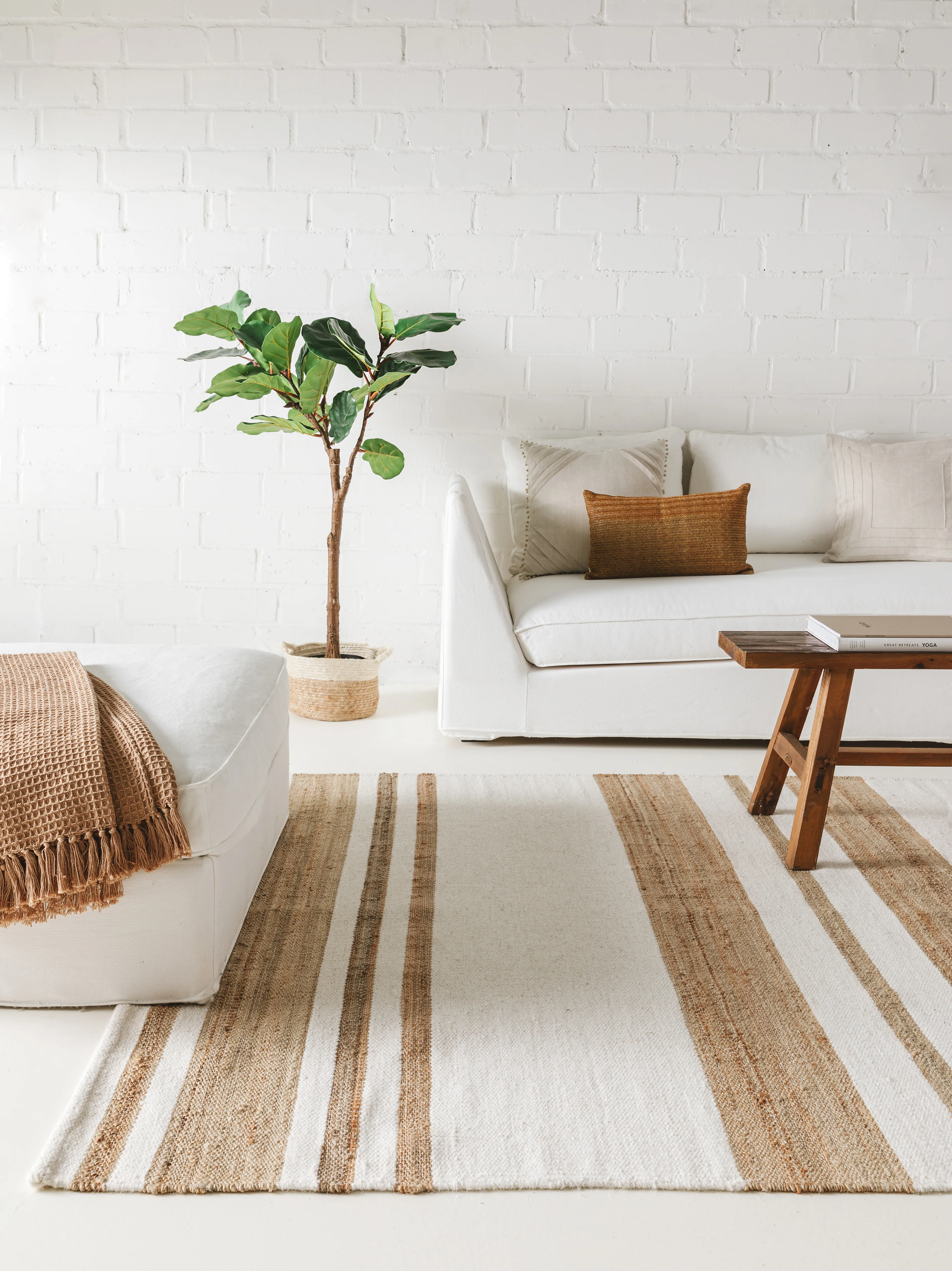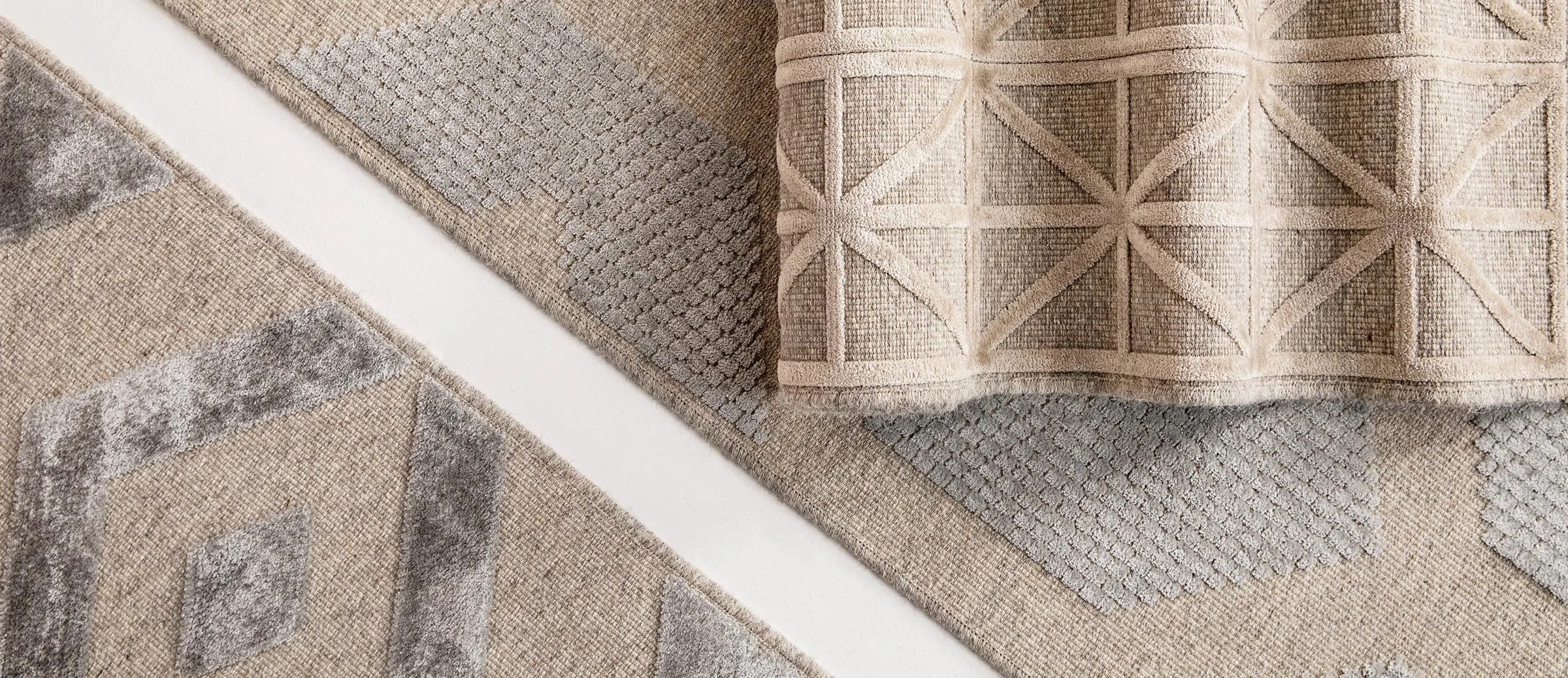Sisal
Sisal is a natural fibre extracted from the leaves of the sisal agave (see image) and has only been used since the 19th century. Their name derives from the first port of Sisal in Yucatán, Mexico. It is one of the most sought after natural fibres and in addition to rugs is made into ropes cables and yarn. Since the short, thick fibres cannot be spun, fibre bundles are used as raw material.
Due to its properties, the sisal fibre is not suitable for textile production. Because sisal is a leaf fibre that contains lignin and pectin in addition to cellulose, it is tougher and coarser than bast. Sisal fibres are extremely tough and tension-resistant and are well-suited for rugs that are located in busy living and office spaces. Due to their moisture-repellent properties, sisal rugs and mats can also be used as outdoor decoration or laid out as runners in the hallway.



